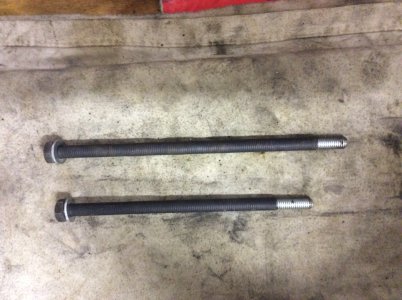My wife bought us a Maximat 7, which has a lathe and a mill.
I grew up around an Atlas mill, and although my dad rarely let me within 5' of it, at least I saw how it worked and operated and I grew to have a working knowledge of the bits and pieces. I'm no expert, but I manage to get work done without breaking anything. (he has passed away and the Atlas passed to me)
When it comes to mills, I have no clue. My wife thought she knew about them from using them in school, but she is used to a big Bridgeport setup and also has no clue how these hobby versions work.
The Maximat 7 has a has an MT2 spindle, and I haven't seen anything in the documentation that mentions a drawbar. Yet when I ask around on other sites, I have heard that you are crazy not to use one.
http://www.lathes.co.uk/emco/page4.html
I have a set of collets that came with the machine, but the collet chuck is not an MT2, so I'll need to buy one to work with the the mill. What I'm wrestling with is figuring out what I need for a drawbar, which would then need to match up with whatever collet chuck I purchase.
Does anyone have one of these? I believe the same mill was used with the V10 as well.
Any idea what I would need to measure to get on the right path for figuring out what I need for a drawbar?
Brokk...
I grew up around an Atlas mill, and although my dad rarely let me within 5' of it, at least I saw how it worked and operated and I grew to have a working knowledge of the bits and pieces. I'm no expert, but I manage to get work done without breaking anything. (he has passed away and the Atlas passed to me)
When it comes to mills, I have no clue. My wife thought she knew about them from using them in school, but she is used to a big Bridgeport setup and also has no clue how these hobby versions work.
The Maximat 7 has a has an MT2 spindle, and I haven't seen anything in the documentation that mentions a drawbar. Yet when I ask around on other sites, I have heard that you are crazy not to use one.
http://www.lathes.co.uk/emco/page4.html
I have a set of collets that came with the machine, but the collet chuck is not an MT2, so I'll need to buy one to work with the the mill. What I'm wrestling with is figuring out what I need for a drawbar, which would then need to match up with whatever collet chuck I purchase.
Does anyone have one of these? I believe the same mill was used with the V10 as well.
Any idea what I would need to measure to get on the right path for figuring out what I need for a drawbar?
Brokk...

